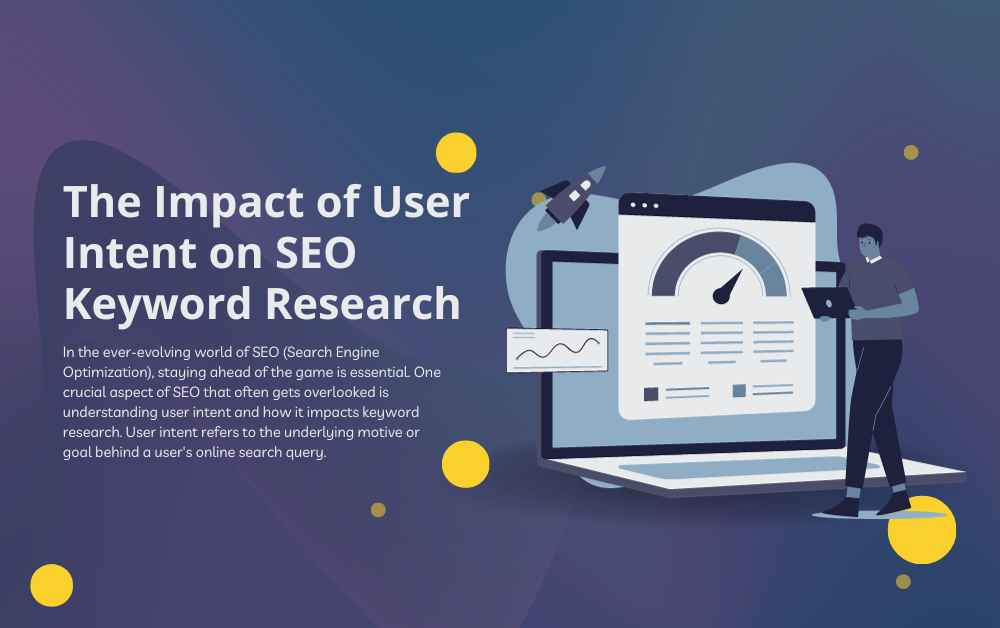In the ever-evolving world of SEO (Search Engine Optimization), staying ahead of the game is essential. One crucial aspect of SEO that often gets overlooked is understanding user intent and how it impacts keyword research. User intent refers to the underlying motive or goal behind a user’s online search query. It’s not just about the keywords themselves, but the context and purpose behind them. By delving deep into user intent, SEO professionals can tailor their content and optimization strategies to align with what users are truly looking for when they enter a particular search query.
Seo Services in Dubai understand the importance of user intent in SEO and offer specialized solutions to businesses in the vibrant and competitive Dubai market. They recognize that catering to user intent involves not only keyword optimization but also delivering valuable, relevant content that directly addresses the needs of their target audience. By combining their expertise in SEO with a keen understanding of local market dynamics, Seo Services in Dubai help businesses rank higher in search engine results and drive organic traffic that converts into valuable leads and customers. Whether you’re a startup or an established enterprise in Dubai, partnering with Seo Services in Dubai can give you the edge you need to succeed in the digital landscape.
Understanding User Intent
User intent, also known as search intent, refers to the reason behind a user’s online search. When someone types a query into a search engine, they have a specific goal or purpose in mind. Understanding user intent is crucial for search engines like Google to provide the most relevant results.
Types of User Intent
- Informational Intent: Users seek information or answers to questions. For example, someone searching for “how to tie a tie” is looking for instructions or a tutorial.
- Navigational Intent: Users want to visit a specific website or webpage. They type in the name of the website or a specific page. For instance, someone searching for “Facebook” intends to visit Facebook’s website.
- Transactional Intent: Users are ready to make a purchase or engage in some form of online transaction. Keywords like “buy iPhone 13” or “best digital marketing courses” reflect transactional intent.
- Commercial Investigation Intent: Users are in the research phase, comparing products, reading reviews, and considering their options before making a purchase decision. Keywords like “best laptops under $1000” fall into this category.
The Impact of User Intent on SEO
Now that we’ve defined user intent let’s explore how it affects SEO and keyword research.
1. Better Keyword Selection
Understanding user intent helps you select the most appropriate keywords for your content. By aligning your keywords with user intent, you can create content that directly addresses what users are looking for.
2. Improved Click-Through Rates (CTR)
When your content aligns with user intent, it’s more likely to appear in relevant search results. This increases the chances of users clicking on your content, leading to higher CTRs (Click-Through Rates).
3. Enhanced User Experience
Meeting user intent ensures that visitors find what they’re looking for when they land on your website. This improves user satisfaction and encourages them to spend more time on your site, decreasing bounce rates.
4. Better Rankings
Search engines prioritize content that satisfies user intent. If your content consistently aligns with user expectations, it’s more likely to rank higher in search results.
Tips for Optimizing Keyword Research for User Intent
Now that we’ve seen how user intent impacts SEO let’s explore some practical tips for optimizing your keyword research process.
1. Analyze Search Engine Results Pages (SERPs)
When conducting keyword research, take a close look at the search engine results pages. Examine the top-ranking pages and see what kind of content they offer. Are they blog posts, product pages, or informative articles? Understanding the type of content that ranks well for a particular keyword can help you align your content with user intent.
2. Use Long-Tail Keywords
Long-tail keywords are more specific and often reflect user intent better than generic keywords. For example, “digital marketing courses for beginners” is more specific than “digital marketing courses.” Long-tail keywords can help you target a niche audience with a clear intent.
3. Create High-Quality Content
Regardless of the keyword you target, your content must provide value and be of high quality. Content that addresses user intent comprehensively is more likely to rank well and keep users engaged.
4. Optimize for Mobile
With the increasing use of smartphones, optimizing your website for mobile is crucial. Ensure that your site is mobile-friendly, loads quickly, and provides a seamless user experience.
5. Monitor User Behavior
Use tools like Google Analytics to monitor user behavior on your website. Track metrics such as bounce rate, time on page, and conversion rates. These metrics can provide valuable insights into whether your content aligns with user intent.
6. Conduct Regular Keyword Audits
SEO is an ongoing process, and user intent can change over time. Conduct regular keyword audits to ensure that your content remains aligned with current user expectations.
7. Pay Attention to Voice Search
With the rise of voice-activated devices like smart speakers and virtual assistants, optimizing for voice search is becoming increasingly important. Voice searches often have conversational and long-tail keywords, so consider how your content addresses these queries.
Note: Elevate your online presence with our top-notch Technical SEO Services Dubai. Our expert team ensures your website’s technical aspects are optimized for search engines, driving more traffic and boosting your online success.
Conclusion
In the world of SEO, understanding and catering to user intent is essential for success. By aligning your keyword research and content creation with user expectations, you can improve your website’s rankings, CTRs, and overall user experience. Keep in mind that SEO is an ongoing process, and staying up-to-date with user intent trends is crucial for long-term success. So, start implementing these tips today and watch your website climb the search engine rankings while providing value to your audience.



